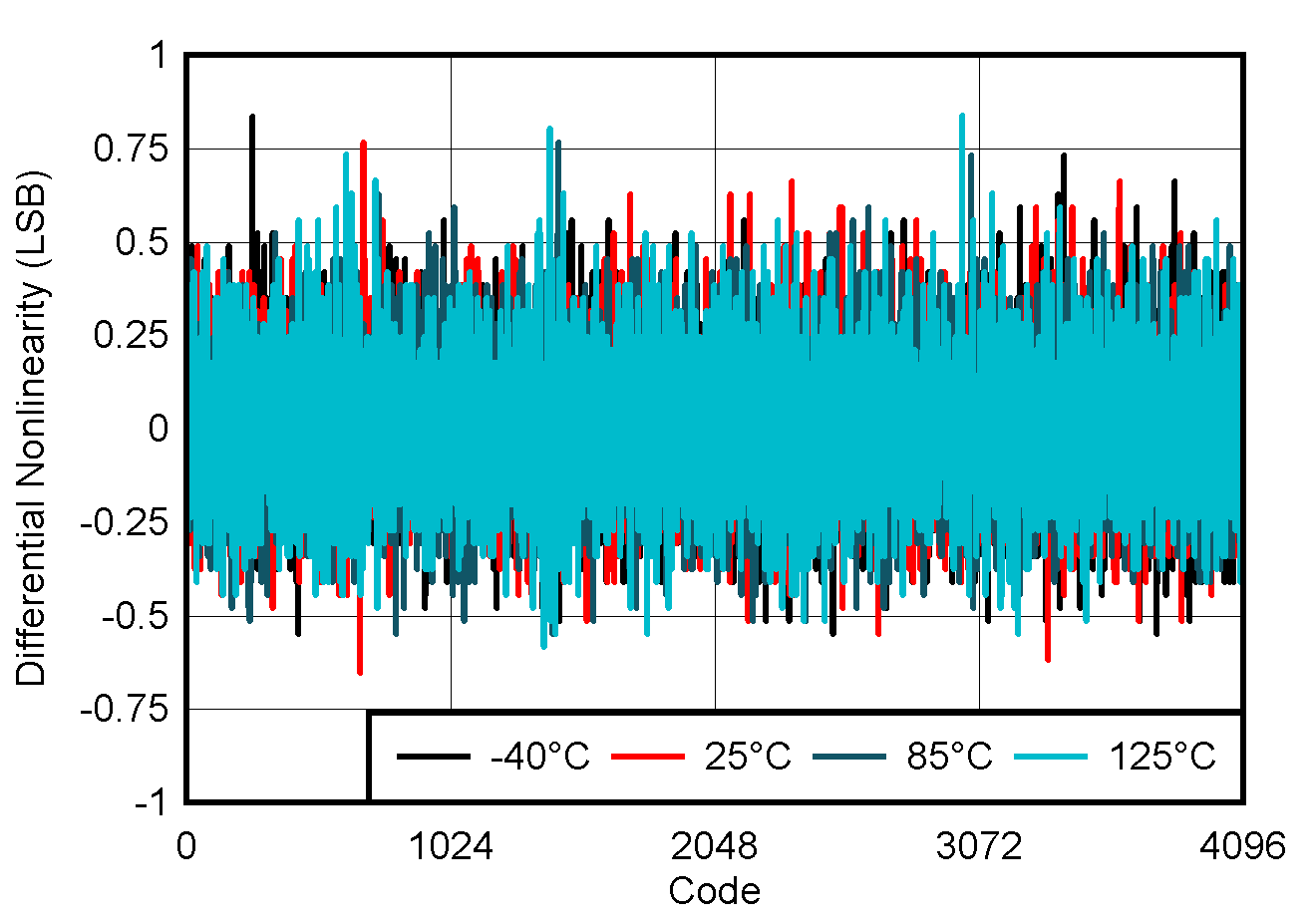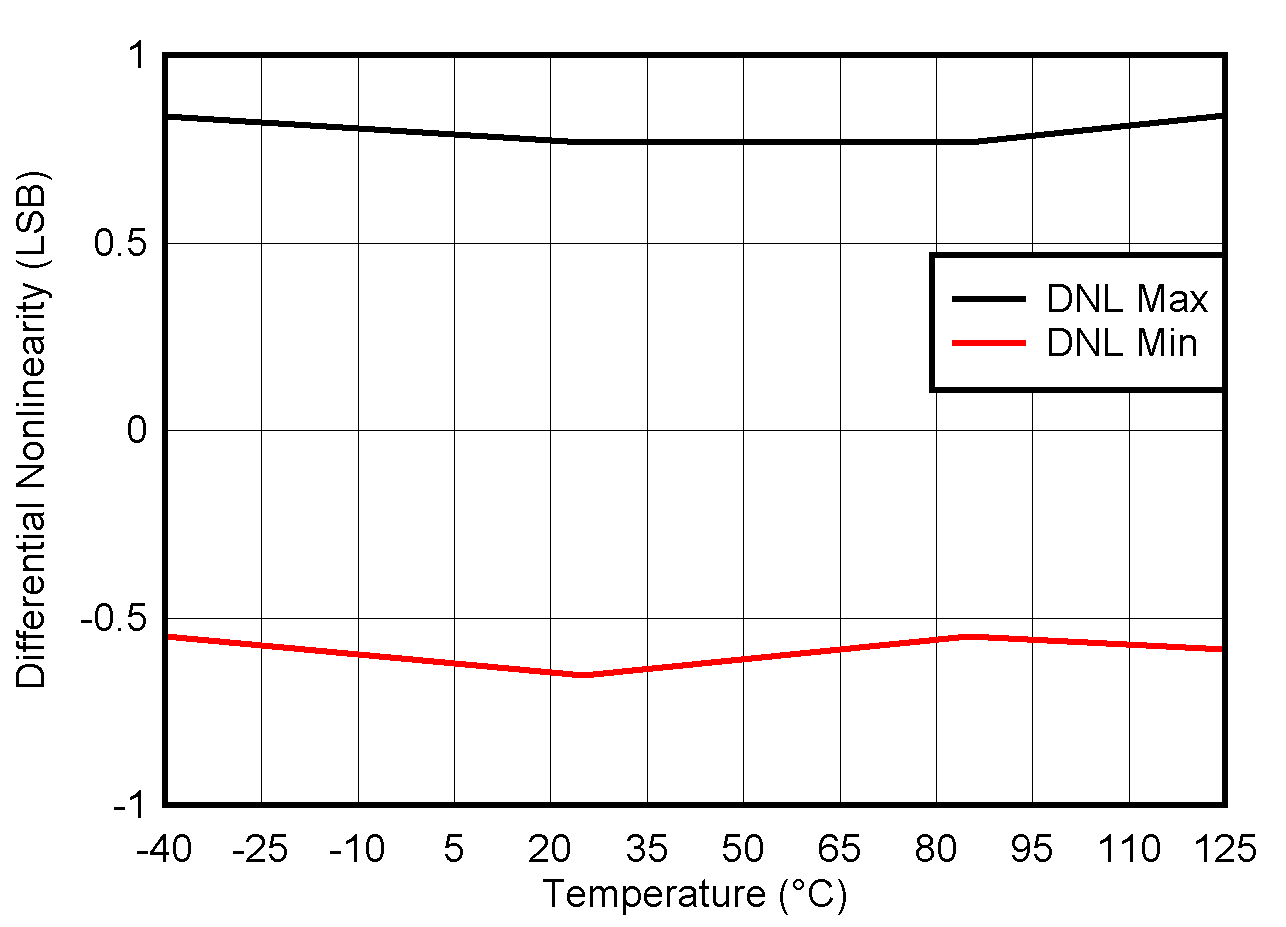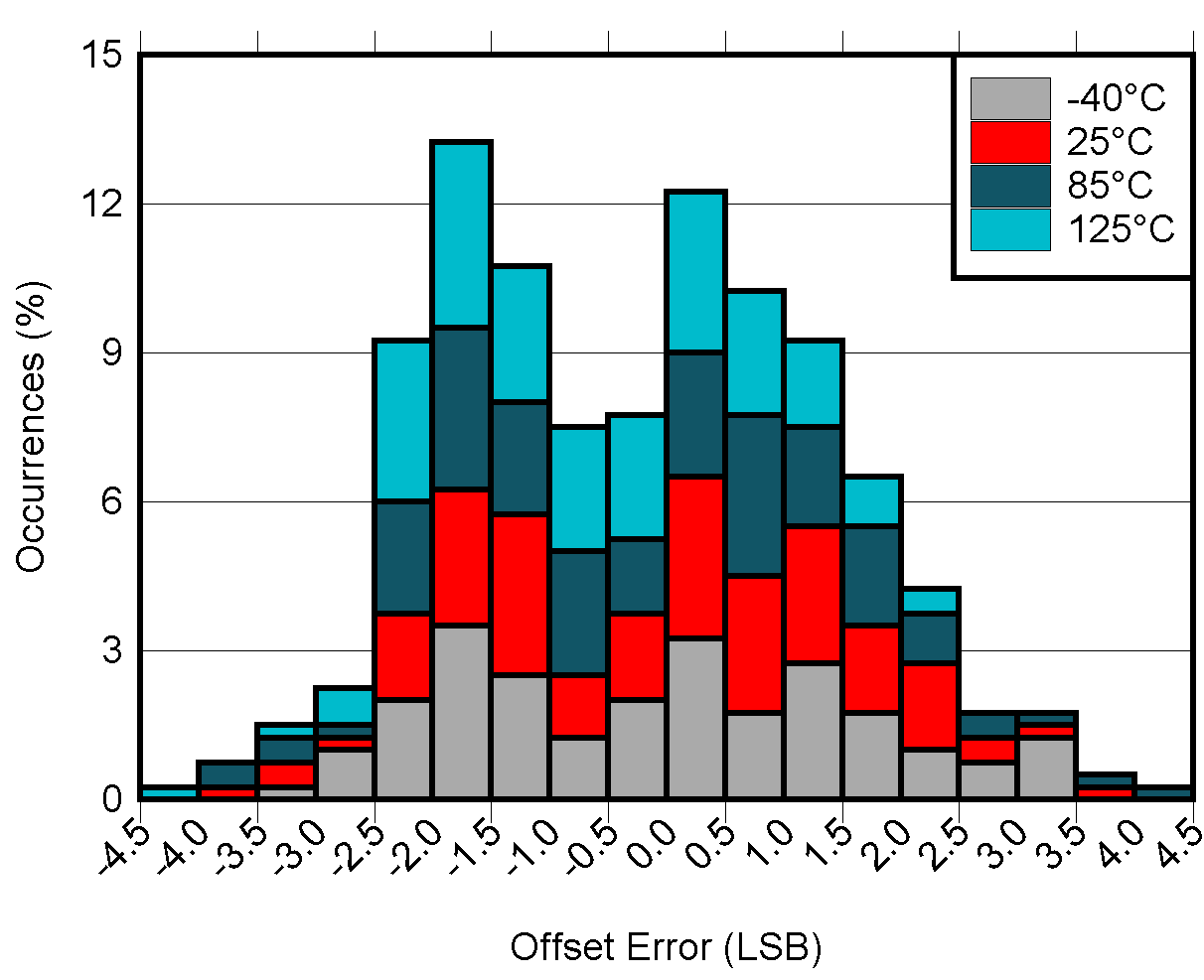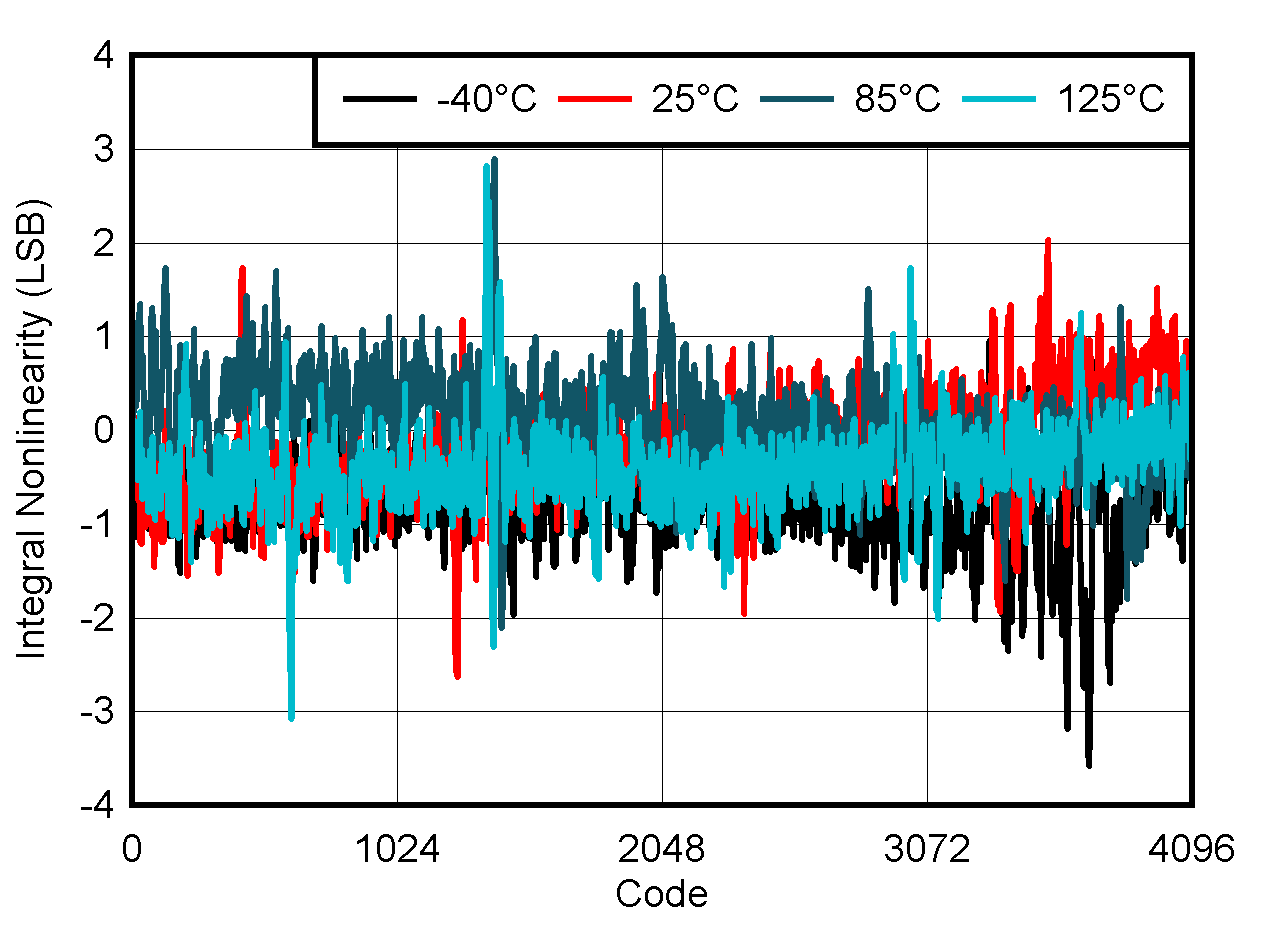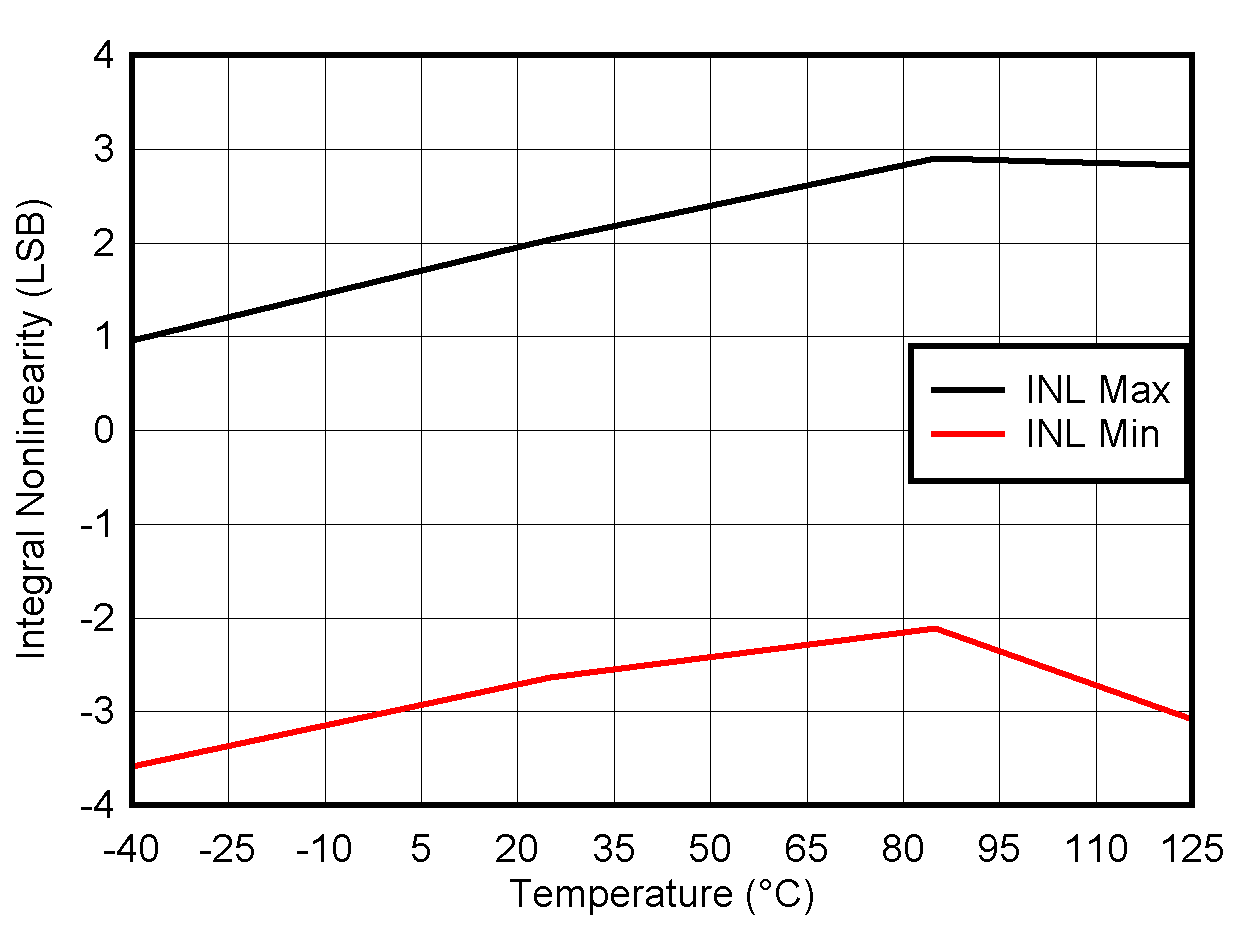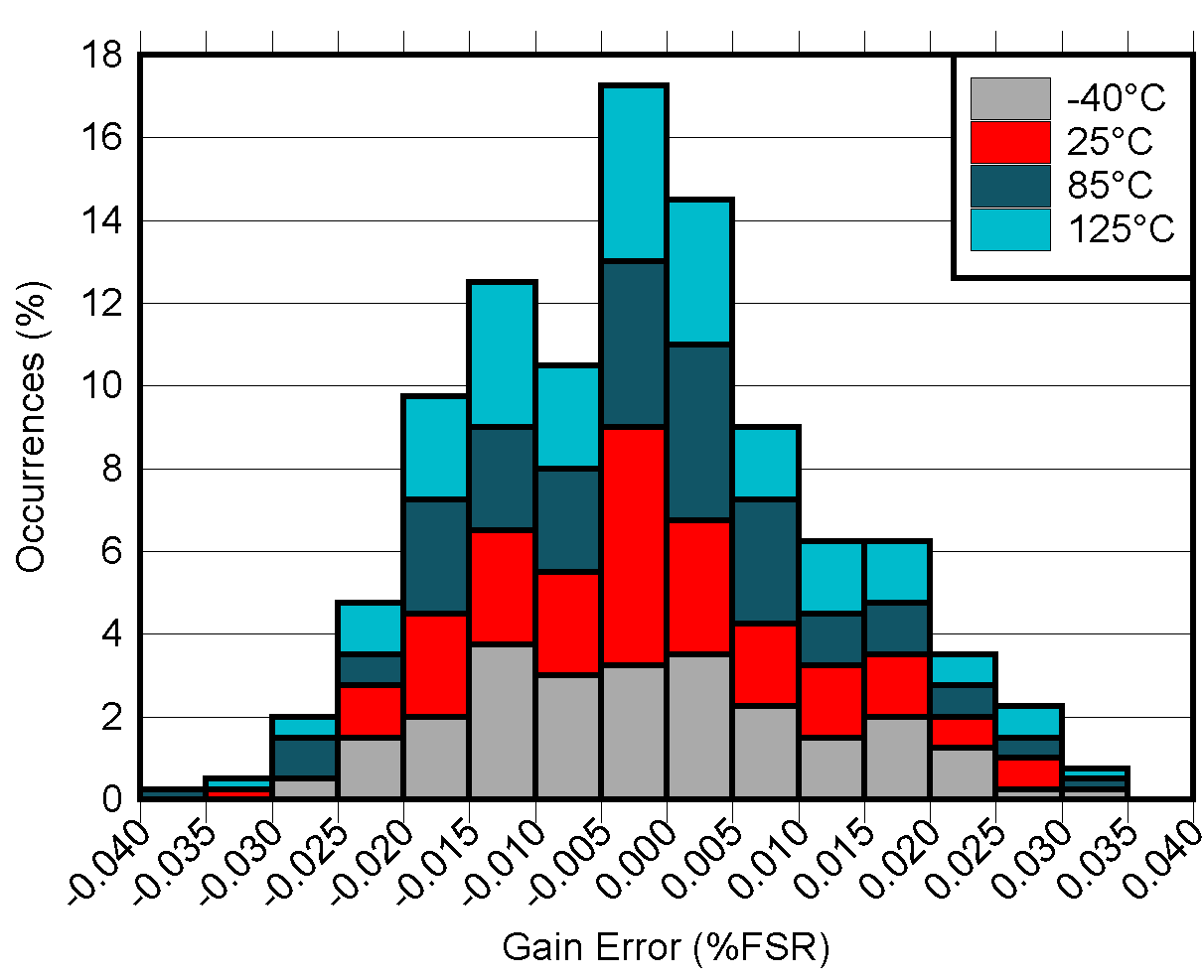JAJSNU4A May 2023 – June 2024 AFE78201 , AFE88201
PRODUCTION DATA
- 1
- 1 特長
- 2 アプリケーション
- 3 概要
- 4 Pin Configuration and Functions
-
5 Specifications
- 5.1 Absolute Maximum Ratings
- 5.2 ESD Ratings
- 5.3 Recommended Operating Conditions
- 5.4 Thermal Information
- 5.5 Electrical Characteristics
- 5.6 Timing Requirements
- 5.7 Timing Diagrams
- 5.8 Typical Characteristics: VOUT DAC
- 5.9 Typical Characteristics: ADC
- 5.10 Typical Characteristics: Reference
- 5.11 Typical Characteristics: Power Supply
-
6 Detailed Description
- 6.1 Overview
- 6.2 Functional Block Diagram
- 6.3
Feature Description
- 6.3.1 Digital-to-Analog Converter (DAC) Overview
- 6.3.2 Analog-to-Digital Converter (ADC) Overview
- 6.3.3 Programmable Out-of-Range Alarms
- 6.3.4 IRQ
- 6.3.5 Internal Reference
- 6.3.6 Integrated Precision Oscillator
- 6.3.7 Precision Oscillator Diagnostics
- 6.3.8 One-Time Programmable (OTP) Memory
- 6.3.9 GPIO
- 6.3.10 Timer
- 6.3.11 Unique Chip Identifier (ID)
- 6.3.12 Scratch Pad Register
- 6.4 Device Functional Modes
- 6.5 Programming
- 7 Register Maps
- 8 Application and Implementation
- 9 Device and Documentation Support
- 10Revision History
- 11Mechanical, Packaging, and Orderable Information
パッケージ・オプション
デバイスごとのパッケージ図は、PDF版データシートをご参照ください。
メカニカル・データ(パッケージ|ピン)
- RRU|24
サーマルパッド・メカニカル・データ
発注情報
5.9 Typical Characteristics: ADC
at TA = 25°C, PVDD = 3.3 V, IOVDD = 1.8 V, external or internal VREFIO = 1.25 V, RLOAD = 50 kΩ to GND, CLOAD = 100 pF to GND, and digital inputs at IOVDD or GND (unless otherwise noted)
